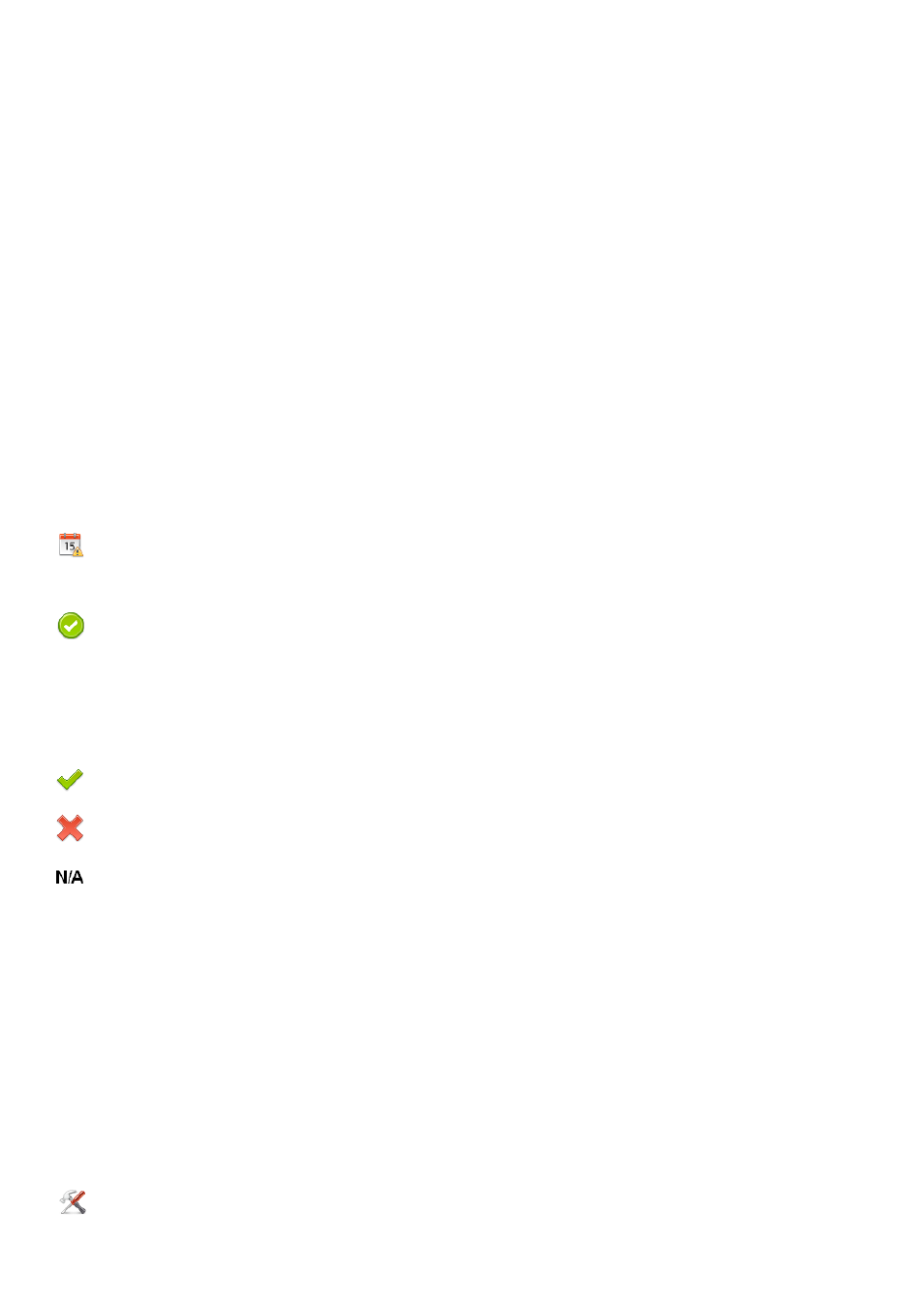Seaward Apollo 500 User Manual
Page 10

Bluetooth Setup), or set to automatically
increment (see 11.4 PAT Settings).
Test Sequence
This is the name of the pre-defined test
sequence which will be performed on the
equipment.
Site
This is the site where the equipment is
located. You can choose a site from the
dropdown using the arrow keys or enter a
new one.
Location
This is the location within the site where
the equipment is. You can choose a
location from the dropdown using the arrow
keys or enter a new one.
Retest Period (Visual) This is the period, in months, in which the
equipment should be re-inspected. This
can be completed manually or the ‘Risk
Based Retest Period Calculator’ can be
used.
Retest Period (Full)
This is the period, in months, in which the
equipment should be re-tested. This can be
completed manually or the ‘Risk Based
Retest Period Calculator’ can be used.
11.1.2 Using the Risk Based Retest Period Calculator
The Risk Based Retest Period Calculator will allow you to
select options using the arrow keys from the dropdowns. It
will then determine if the asset is Low or High risk and
advise retest periods for Formal Visual and Full Test.
This is the Accept function. This will accept the changes
made in the current screen and move to the next screen.
11.1.3 The Formal Visual Inspection
All preset test sequences start with a Visual Inspection.
This is the Pass Icon.
This is the Fail icon.
This means that the inspection is not applicable to the EUT.
Pass
All
Pressing the Pass All button will apply a pass to all relevant
inspections and move onto the next test.
11.1.4 The Electrical Tests
The Apollo 500 has probe detection that will automatically flag up if you do not have the correct probe configuration for the test you are trying to perform.
During the tests you can see the test duration, limit and result on screen, see 9.1 Screen Layout.
Should any test with the sequence fail the sequence will be aborted and you will presented with the Notes screen by default but this can be changed, see 11.5 PAT Settings.
11.1.5 Printing a Label
If you have a TnT Bluetooth printer configured with the Apollo 500 you can set it to automatically print a label after each test.
In PAT Settings set After Test to Print Label and press Save.
See 10.3 Bluetooth Settings & 11.5 PAT Settings.
This is the Tools function. This function allows you to
configure the label Title, select a Pass or Fail Logo,
change print density & size (printer dependant) and select
which pre-configured label printer to use.